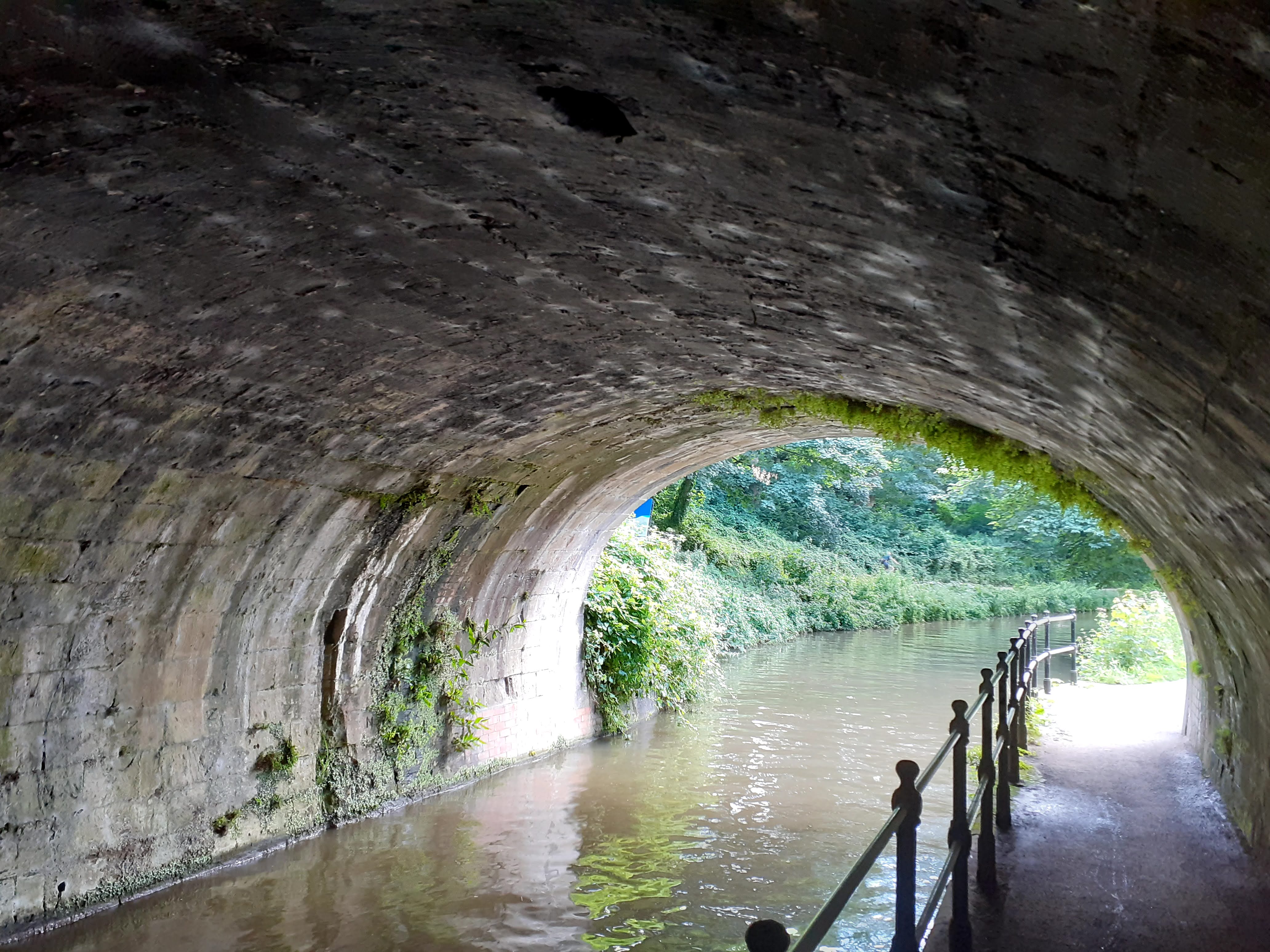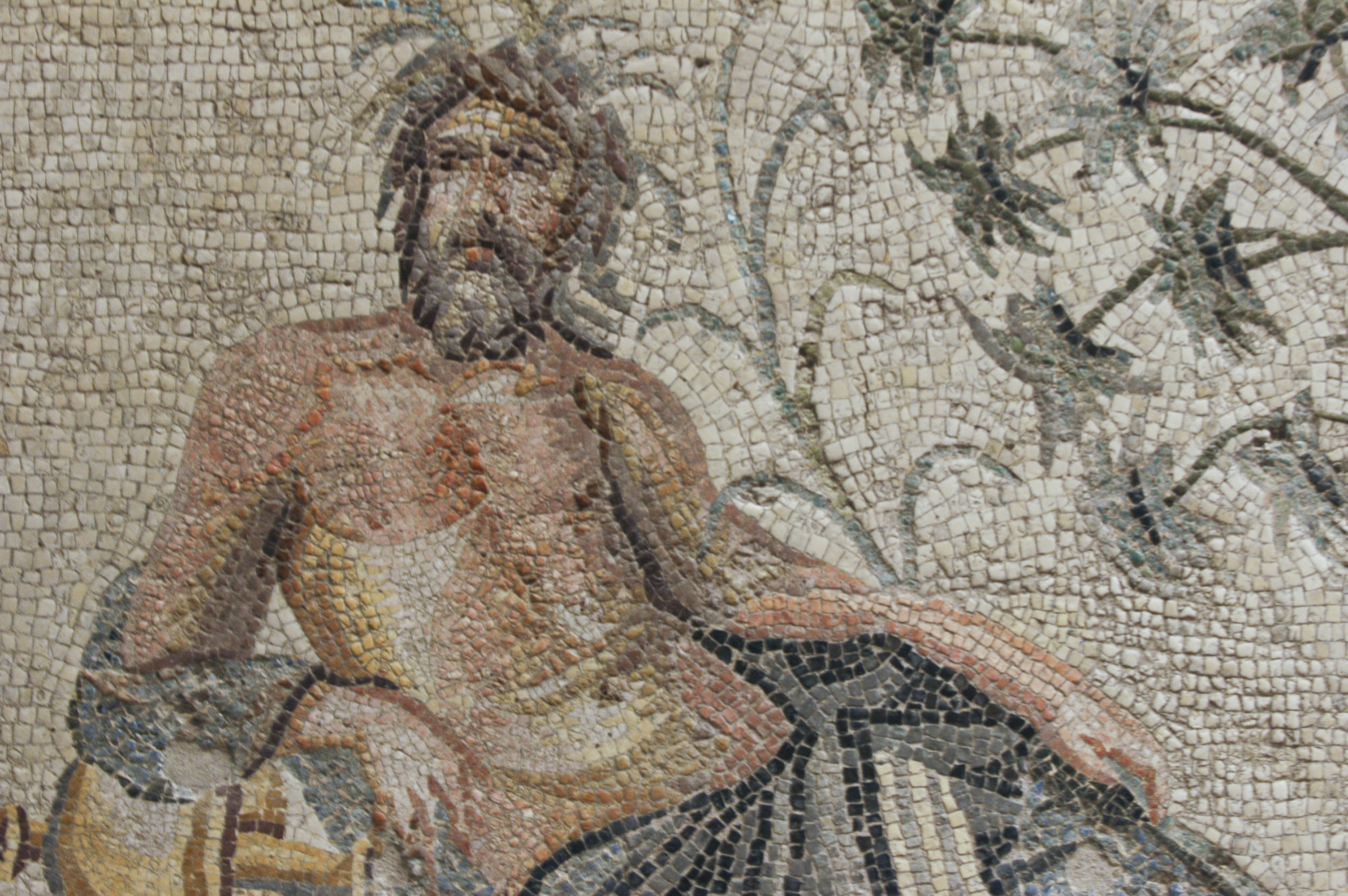|
Sydney Gardens Tunnels
The Sydney Gardens Tunnels are two canal tunnels on the Kennet and Avon Canal in Bath, UK. The No. 1 Tunnel (also known as the Cleveland Tunnel) brings the canal into Sydney Gardens from the south and the No. 2 Tunnel (also known as the Sydney Gardens Tunnel) exits the gardens to the north. Both tunnels are Grade II* listed, and are two of three on the waterway—the third being the Bruce Tunnel in Wiltshire. History Sydney Gardens in Bathwick were laid out in the early 1790s. The Kennet and Avon Canal was cut in the years immediately following this; the canal's route took it through the gardens. The canal company and proprietors of the gardens entered into an agreement which allowed the canal to take this route provided that the canal company provide tunneling and appropriate ornamental bridges at its expense. The tunnels were designed by John Rennie and constructed in approximately 1800, predating the canal's Bruce Tunnel by a decade. No. 1 Tunnel T ... [...More Info...] [...Related Items...] OR: [Wikipedia] [Google] [Baidu] |
Bath, Somerset
Bath (Received Pronunciation, RP: , ) is a city in Somerset, England, known for and named after its Roman Baths (Bath), Roman-built baths. At the 2021 census, the population was 94,092. Bath is in the valley of the River Avon, Bristol, River Avon, west of London and southeast of Bristol. The city became a UNESCO World Heritage Site in 1987, and was later added to the transnational World Heritage Site known as the "Great Spa Towns of Europe" in 2021. Bath is also the largest city and settlement in Somerset. The city became a spa with the Latin name ' ("the waters of Sulis") 60 AD when the Romans built Roman Baths (Bath), baths and a temple in the valley of the River Avon, although List of geothermal springs in the United Kingdom, hot springs were known even before then. Bath Abbey was founded in the 7th century and became a religious centre; the building was rebuilt in the 12th and 16th centuries. In the 17th century, claims were made for the curative properties of water ... [...More Info...] [...Related Items...] OR: [Wikipedia] [Google] [Baidu] |
Portal (architecture)
A portal is an opening in a wall of a building, gate or fortification, especially a grand entrance to an important structure. Doors, metal gates, or portcullis in the opening can be used to control entry or exit. The surface surrounding the opening may be made of simple building materials or decorated with ornamentation. The elements of a portal can include the voussoir, tympanum, an ornamented mullion or ''trumeau'' between doors, and columns with carvings of saints in the westwork of a church. Examples File:Baroque portal in Brescia.jpg, Baroque portal of a private palace in Brescia File:Quito Iglesia de El Carmen Bajo Southwestern carved door.jpg, Baroque portal of the Church of El Carmen Bajo Monastery in Quito File:Dülmen, St.-Viktor-Kirche, Eingangsportal -- 2021 -- 4504-10.jpg, Wooden portal of the Church of St. Victor in Dülmen File:Porto - Sant Martí de Cedofeita - Façana principal.JPG, Romanesque portal of the Church of São Martinho de Cedofeita, with ... [...More Info...] [...Related Items...] OR: [Wikipedia] [Google] [Baidu] |
Canal Tunnels In England
Canals or artificial waterways are waterways or engineered channels built for drainage management (e.g. flood control and irrigation) or for conveyancing water transport vehicles (e.g. water taxi). They carry free, calm surface flow under atmospheric pressure, and can be thought of as artificial rivers. In most cases, a canal has a series of dams and locks that create reservoirs of low speed current flow. These reservoirs are referred to as ''slack water levels'', often just called ''levels''. A canal can be called a navigation canal when it parallels a natural river and shares part of the latter's discharges and drainage basin, and leverages its resources by building dams and locks to increase and lengthen its stretches of slack water levels while staying in its valley. A canal can cut across a drainage divide atop a ridge, generally requiring an external water source above the highest elevation. The best-known example of such a canal is the Panama Canal. Many cana ... [...More Info...] [...Related Items...] OR: [Wikipedia] [Google] [Baidu] |
Father Thames
A water deity is a deity in mythology associated with water or various bodies of water. Water deities are common in mythology and were usually more important among civilizations in which the sea or ocean, or a great river was more important. Another important focus of worship of water deities has been springs or holy wells. As a form of animal worship, whales and snakes (hence dragons) have been regarded as godly deities throughout the world (as are other animals such as turtles, fish, crabs, and sharks). In Asian lore, whales and dragons sometimes have connections. Serpents are also common as a symbol or as serpentine deities, sharing many similarities with dragons. Africa Akan * Bosompo, primordial embodiment of the oceans *Abena Mansa, sea goddess associated with gold * Ashiakle, goddess of the treasures at the bottom of the ocean *Tano (Ta Kora), god of the Tano river *Bia, god of the Bia river *Birim, goddess of the Birim river *Bosomtwe, antelope god of the Bosom ... [...More Info...] [...Related Items...] OR: [Wikipedia] [Google] [Baidu] |



